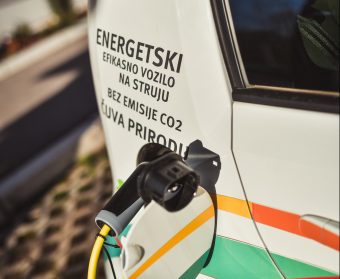
Modern society has resulted in prosperity evident at every turn. We have the privilege today to drive electronic vehicles, we complete tasks at the simple click of a button, and robots are doing certain types of jobs alongside the human workforce. That’s not all, technique and technology are progressing at alarming rates and it’s anyone’s guess what the future will bring. As we continue to ruthlessly consume natural resources, mountains of paper, plastic, organic and hazardous waste is the by-product.
Luckily, self-aware individuals and responsible companies are doing their best to personally contribute to changing the way they approach available resources, as it is clear that things have to change. The first steps are the hardest, and many environmental frontliners, despite their huge desire for change, are unsure when it comes to choosing which environmental protection activities are most effective.
We have to admit that it is easier for large organizations to take the best course of action toward achieving environmental goals. Companies and banks, with large numbers of staff, clear rules, standardization and support tools can more easily achieve defined environmental protection and sustainable development goals and fulfil all energy efficiency measures.
IN FOCUS:
- MORE WORKERS, MORE RECYCLED HAZARDOUS WASTE, A HEALTHIER ENVIRONMENT
- COMPLETELY ECOLOGICAL
- BAMBI’S STRONG AND STRATEGIC COMMITMENT TO SUSTAINABLE SOLUTIONS
ProCredit Bank is a pioneer in the implementation of the EMS (Environmental Management System) in our country. This is a system of strategies created to manage and continually improve the bank’s and its related parties’ impact on the environment. For over ten years now, ProCredit Bank has implemented this set of carefully designed steps to monitor and maintain environmental protection.
ProCredit Bank is the first bank in Serbia to have obtained the ISO 14001:2015 Certificate, which confirms that the bank applies a sustainable Environmental Management System and fulfils all the requirements of the ISO 14001 Standard.
In practical terms, this means that in its internal environmental management, the bank monitors the consumption of electricity, water, fuel, paper use, waste generation and its treatment, and CO2 emissions.

Thanks to these records, the bank knows its exact carbon footprint. However, that’s not all. This stored data also calls upon and obliges us to find new ways to reduce consumption and generate additional savings. The long-term experience and improvements in the implementation of the EMS system, as well as the achieved results, indicate that we have taken a big step forward.
No paper and plastic waste
By digitalizing operations, ProCredit Bank has reduced its carbon footprint by introducing the centralization of employees and electronic channels used to make payments, open accounts and provide many other services.
Another huge step was taken in 2018, when the bank took the decision to eliminate the use of single-use plastic in its premises. The bank’s on-site kitchens are equipped with all the necessary multiple-use dishes for employees (plates, cutlery, glasses, cups) while plastic cups near water dispensers in branches have been replaced with biodegradable cups.
All banks operating within the ProCredit Group have adopted their own Internal versions of the document entitled „Guide — Reducing plastic in offices“. This document lists plastic objects most often used at work and provides sustainable alternatives. When procuring office supplies, and during every second procurement, care is taken in terms of the companies supplies are ordered from and the materials from which ordered supplies are made. Wherever there is room to implement sustainable solutions, the bank will choose the environmentally conscious supplier even if the cost of procurement is not the optimal choice. ProCredit Bank manages electronic and hazardous waste in line with the Law on Waste Management. Waste is sent for recycling several times per year, and a clear Waste Management Plan has been implemented.
Prepared by: Milica Radičević
Read the story in the new issue of the Energy portal Magazine Waste Management.



